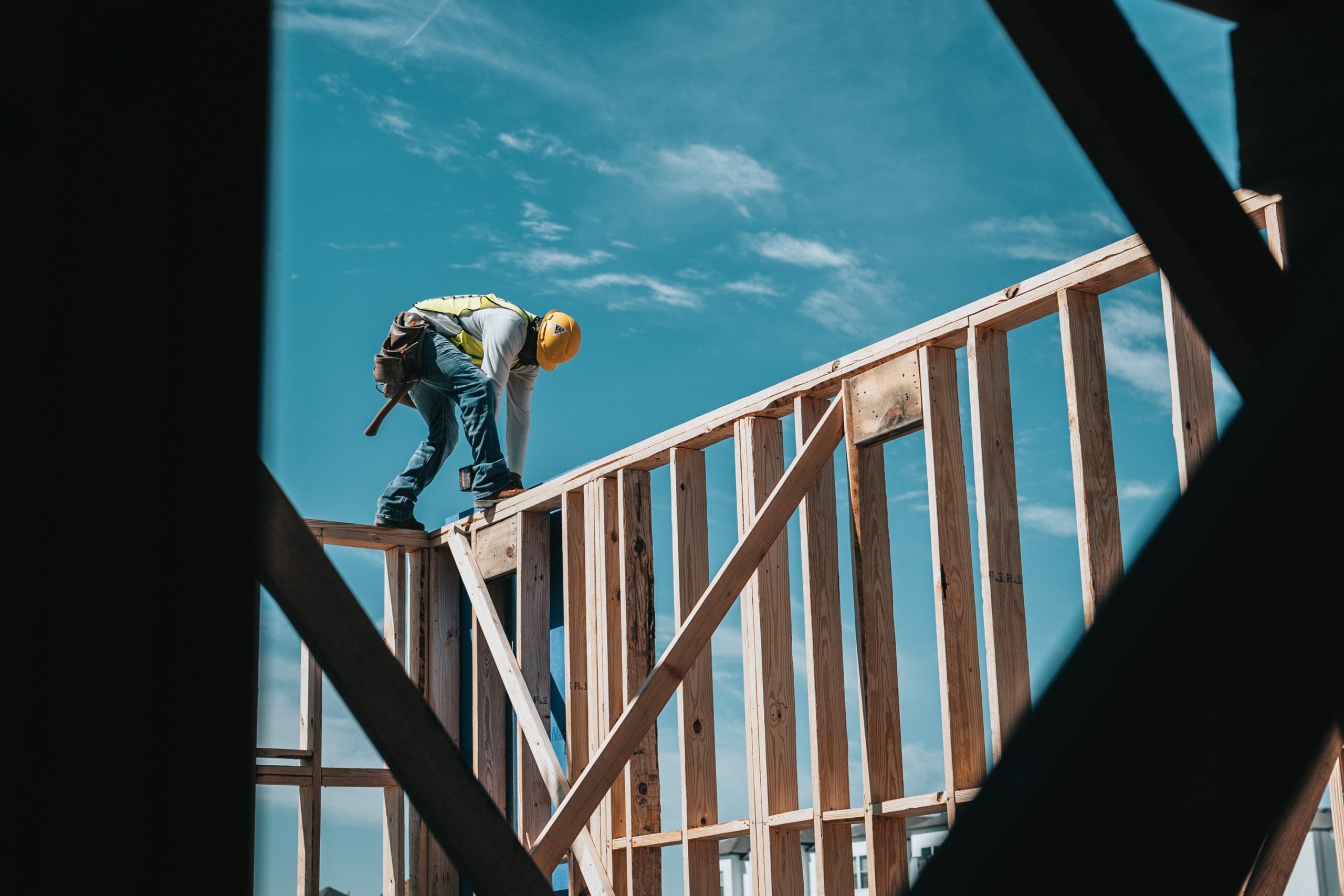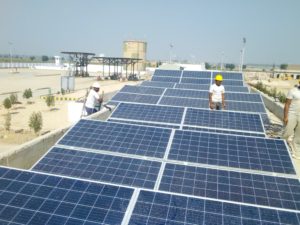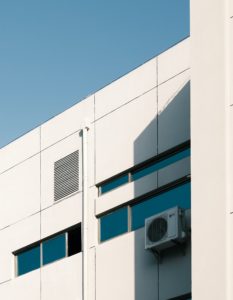What is the solution?
Renovation should be favoured over new construction, as it has the advantage of reusing most of the existing materials and avoiding much of the waste due to demolition. In the case of a new building, it is necessary to adapt the construction to the climatic conditions, to implement measures to improve thermal and energy performance (passive measures), and to use low-carbon materials.
Why is it important?
In 2020, the building sector accounted for about one third of global energy demand and related CO2 emissions (1), of which about ¾ was due to building operations (lighting, space heating and cooling), with the remaining quarter related to construction itself (manufacture and transport of materials, fuel consumption on site).
Construction also has other social and environmental impacts. Air pollution, pressure on natural areas, extraction of raw materials and intensive use of resources, including water. The construction of new buildings also results in the occupation of ever larger areas, the increase of road infrastructure, artificialisation of land or distance from urban centres as well as the increased use of vehicles.
Point of attention
-
Point of attention
The word “sustainability” has many meanings, especially in the world of construction. The primary criteria for the sustainability of a building are its strength and functionality, not its environmental impact.

Key solutions
-
#1 Renovation rather than construction
Renovation allows the reuse of many of the elements of a building, such as its roof, walls and structure. It also reduces the use of new materials and the energy consumption associated with their use. Renovation also reduces demolition waste and avoids the occupation of new natural areas.
-
#2 Conception and design
Designing buildings to take into account local climatic conditions, particularly orientation to the sun and prevailing winds, and make the most of them. The orientation of buildings will reduce or increase heat gain depending on the context. Natural ventilation and lighting should be favoured to minimise energy consumption, particularly for lighting and air conditioning.
-
#3 Drainage wells
Constructing a drainage well, also known as a Canadian well or Provencal well, is a natural way to heat and cool the interior of buildings without impacting the environment, simply by using outside air. Outside air is drawn into one or more ducts buried horizontally in the ground beneath or adjacent to the building, at least 1.5 m deep. This air picks up the coolness of the ground in summer and the heat of the ground in winter, and then diffuses it inside the building once it has left the ducts.
-
#4 Trombe wall and solar chimney
Installing a Trombe wall reduces energy requirements for heating. The Trombe wall is a passive solar heating system that consists of a solid, darkly painted, south-facing (in the northern hemisphere) wall with a glass pane in front of it. This glass traps the sun’s heat (greenhouse effect), which accumulates and diffuses through the wall to the interior. Solar chimneys, coated in black and facing south, absorb the heat from the sun’s rays and diffuse it into the indoor air.
-
#5 White roofs
Painting the roofs white reflects the sun’s rays and thus prevents heat from being transmitted into the building. This significantly reduces the need for energy-intensive air conditioning. This is a simple, inexpensive and effective solution that does not require major work. Some insulating and reflective paints further enhance the result. (“Cool Roof”)
-
#6 Protection of windows
The use of adhesive films on windows (or glass) will reflect the sun’s rays and prevent the transmission of heat into the building. Fixed or mobile sunshades will shade the most exposed windows and reduce the effects of overheating inside buildings.
-
#7 External insulation
Insulating from the outside means installing a layer of insulation on all the facades of a building. The insulation will act as a thermal envelope and protect the premises from heat or cold. Placed on the outside of the walls, the insulation prevents heat leakage (thermal bridges) and contributes to better heat storage by the walls (thermal inertia). Insulation from the outside therefore makes it possible to limit rapid variations in interior temperature, and to make significant energy savings without impacting on the occupiable surface area of the buildings.
-
#8 Green Building
Greening roofs and facades improves the thermal insulation of buildings and saves energy by reducing the need for air conditioning. In addition, the water vapour produced by the plants cools the ambient air and reduces the urban heat island effect.
-
#9 Tree planting
Planting trees near buildings cools the air through evapotranspiration from the foliage and reduces urban heat island effects. In addition, trees store carbon, improve air quality and provide shade. It is important to plant endemic, non-invasive, varied species that are, if possible, interesting for local biodiversity. Existing natural areas should be preserved. Others can be restored.
-
#10 Materials with high thermal inertia
Use materials with high thermal inertia, i.e. materials that store heat, or cold, and release it gradually into the room. Thermal inertia slows down the speed of heat propagation through a wall and helps to maintain a constant temperature inside a building. Materials such as earth, brick or stone have a high thermal inertia.
-
#11 Biobased materials
Preferably use biobased materials from biomass, such as wood, reed or sheep’s wool, as well as geobased materials of mineral origin, such as earth or stone. These materials generally have a low environmental footprint when they are local and minimally processed. However, the methods of extraction or collection can have a significant impact on the environment.
-
#12 Reused materials
Using materials from reuse or waste reclamation, in particular demolition waste, is an alternative to extracting new raw material. In addition, reuse often limits transport and reduces the volume of waste to be landfilled. Materials are given a second life without undergoing major transformation and are thus part of a circular economy system.
Tools and good practices
- Making better use of existing buildings (in French)
-
Guide to bio- and geo-sourced materials
Published by the French Ministry of Ecological Transition and Territorial Cohesion and the Ministry of Energy Transition (in French)
Read here -
OPALIS: reference tool for using reused materials in construction and renovation projects in Europe
The site is organised around four main sections: a directory of online suppliers, a catalogue of re-use products, success stories and an online bookshop
Read here - Guide to the thermal insulation of buildings (in French)
- Thermal insulation: principles, materials and techniques for the installation of sustainable thermal insulation (in French)
- Resources: What is a cool roof?
- Why green your roof? (in French)
- Guidebook: Drainage wells, installation and commissioning (in French)
- Factsheet: Summer comfort and passive cooling: understanding and taking action (in French)
- Ecolabels for construction
To go further
- Reuse of construction materials: inventory of channels and implementation of reuse practices in France, ADEME (in French)
-
Beating the Heat: A Sustainable Cooling Handbook for Cities, UNEP
An encyclopaedia of proven options to help cool cities. The 80 case studies and examples in the guide demonstrate the effectiveness of the strategies described and can help organisations find the approach best suited to their particular context. From white roofs and vegetation to cooling systems, the examples are diverse.
Read here -
2021 Global Status Report for Buildings and Construction, UNEP
Developed by the Global Building and Construction Alliance (GlobalABC), the report tracks the building and construction sector's progress towards the Paris Agreement targets, based on key indicators of global energy use, emissions, technologies, policies and investments.
Read here
White roofs

Energy consumption of buildings

Renewable energy

Sources
(1) UNEP, “2021 Global Status Report for Buildings and Construction.” Read here.
(2) UNEP, “2021 Global Status Report for Buildings and Construction.” Read here.
(3) United States Environmental Protection Agency, “Sustainable Management of Construction and Demolition Materials.” Read here.
(4) Groupe Qualiconsult, “Réemploi des matériaux : construire éco-responsable.” Read here.
(5) The Hope Program, “Hope’s NYC Coolroofs Program Responsible For Over 1.5 Million Square Feet Of Energy-saving Reflective Rooftop Installations This Year”, 2018. Read here.
(6) CRAterre. Visit their website here.
(7) Typha Combustible & Construction en Afrique de l’Ouest. Visit their website here.
(8) Erte Engineers, “Canadian Wells.” Read here.
(9) Sustainable Procurement Platform. “Kantoor 2023: A New Sustainable and Circular Building in Brussels.” Read here.
Cover photo © Josue Isai Ramos Figueroa/Unsplash.
Heating and air conditioning

